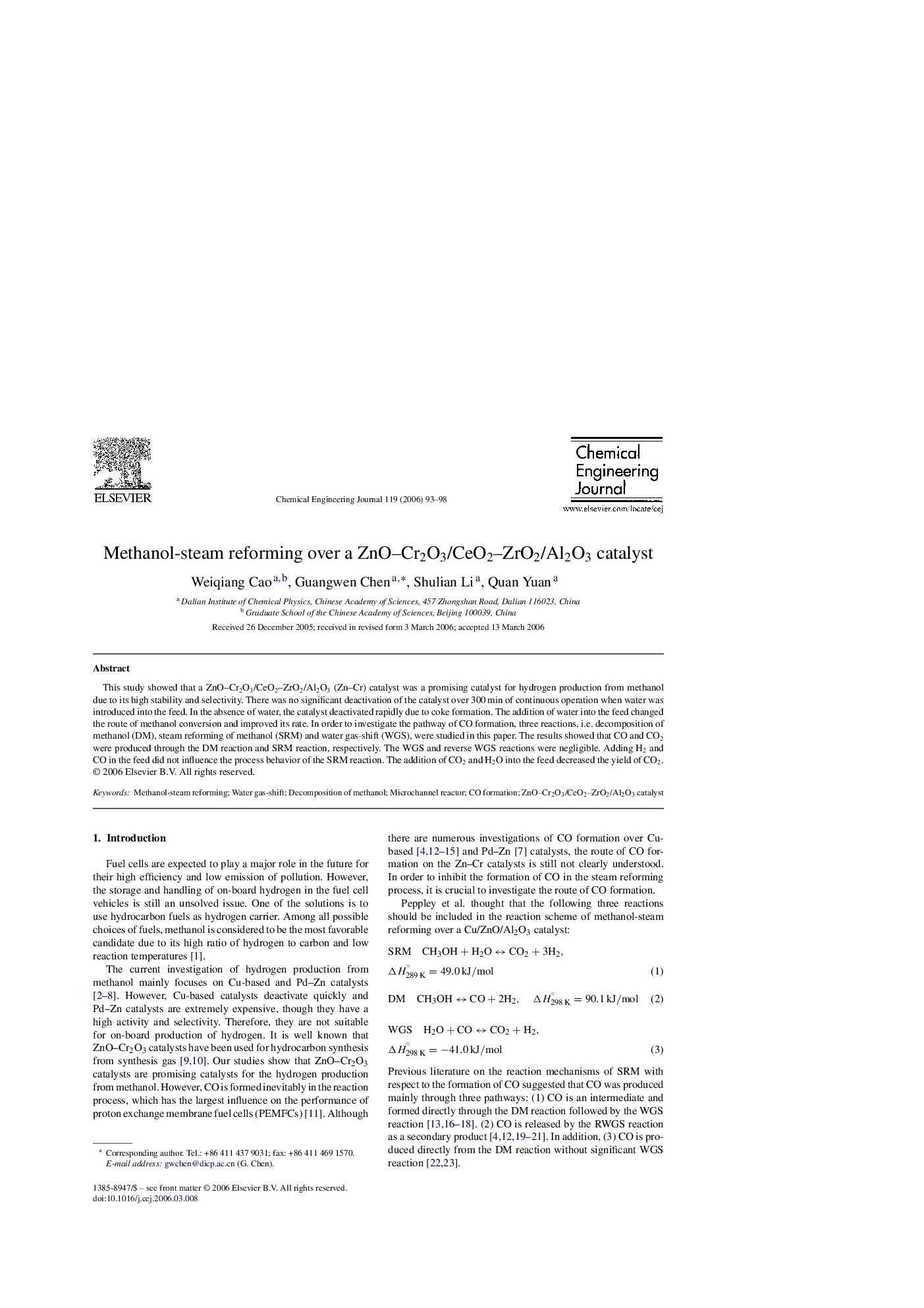| کد مقاله | کد نشریه | سال انتشار | مقاله انگلیسی | نسخه تمام متن |
|---|---|---|---|---|
| 154077 | 456553 | 2006 | 6 صفحه PDF | دانلود رایگان |

This study showed that a ZnO–Cr2O3/CeO2–ZrO2/Al2O3 (Zn–Cr) catalyst was a promising catalyst for hydrogen production from methanol due to its high stability and selectivity. There was no significant deactivation of the catalyst over 300 min of continuous operation when water was introduced into the feed. In the absence of water, the catalyst deactivated rapidly due to coke formation. The addition of water into the feed changed the route of methanol conversion and improved its rate. In order to investigate the pathway of CO formation, three reactions, i.e. decomposition of methanol (DM), steam reforming of methanol (SRM) and water gas-shift (WGS), were studied in this paper. The results showed that CO and CO2 were produced through the DM reaction and SRM reaction, respectively. The WGS and reverse WGS reactions were negligible. Adding H2 and CO in the feed did not influence the process behavior of the SRM reaction. The addition of CO2 and H2O into the feed decreased the yield of CO2.
Journal: Chemical Engineering Journal - Volume 119, Issues 2–3, 15 June 2006, Pages 93–98